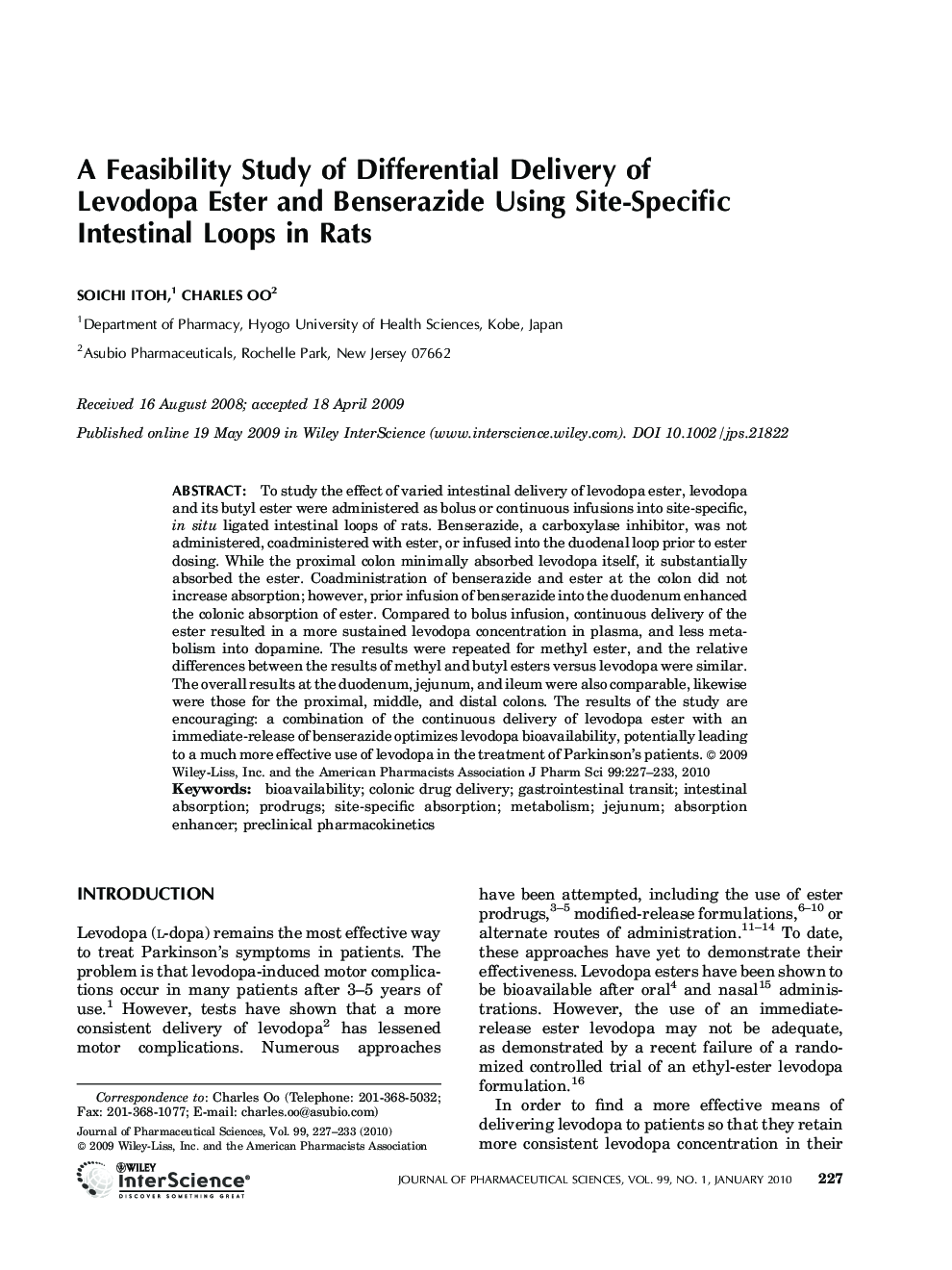| Article ID | Journal | Published Year | Pages | File Type |
|---|---|---|---|---|
| 2486225 | Journal of Pharmaceutical Sciences | 2010 | 7 Pages |
Abstract
To study the effect of varied intestinal delivery of levodopa ester, levodopa and its butyl ester were administered as bolus or continuous infusions into site-specific, in situ ligated intestinal loops of rats. Benserazide, a carboxylase inhibitor, was not administered, coadministered with ester, or infused into the duodenal loop prior to ester dosing. While the proximal colon minimally absorbed levodopa itself, it substantially absorbed the ester. Coadministration of benserazide and ester at the colon did not increase absorption; however, prior infusion of benserazide into the duodenum enhanced the colonic absorption of ester. Compared to bolus infusion, continuous delivery of the ester resulted in a more sustained levodopa concentration in plasma, and less metabolism into dopamine. The results were repeated for methyl ester, and the relative differences between the results of methyl and butyl esters versus levodopa were similar. The overall results at the duodenum, jejunum, and ileum were also comparable, likewise were those for the proximal, middle, and distal colons. The results of the study are encouraging: a combination of the continuous delivery of levodopa ester with an immediate-release of benserazide optimizes levodopa bioavailability, potentially leading to a much more effective use of levodopa in the treatment of Parkinson's patients. © 2009 Wiley-Liss, Inc. and the American Pharmacists Association J Pharm Sci 99:227-233, 2010
Keywords
Related Topics
Health Sciences
Pharmacology, Toxicology and Pharmaceutical Science
Drug Discovery
Authors
Soichi Itoh, Charles Oo,
